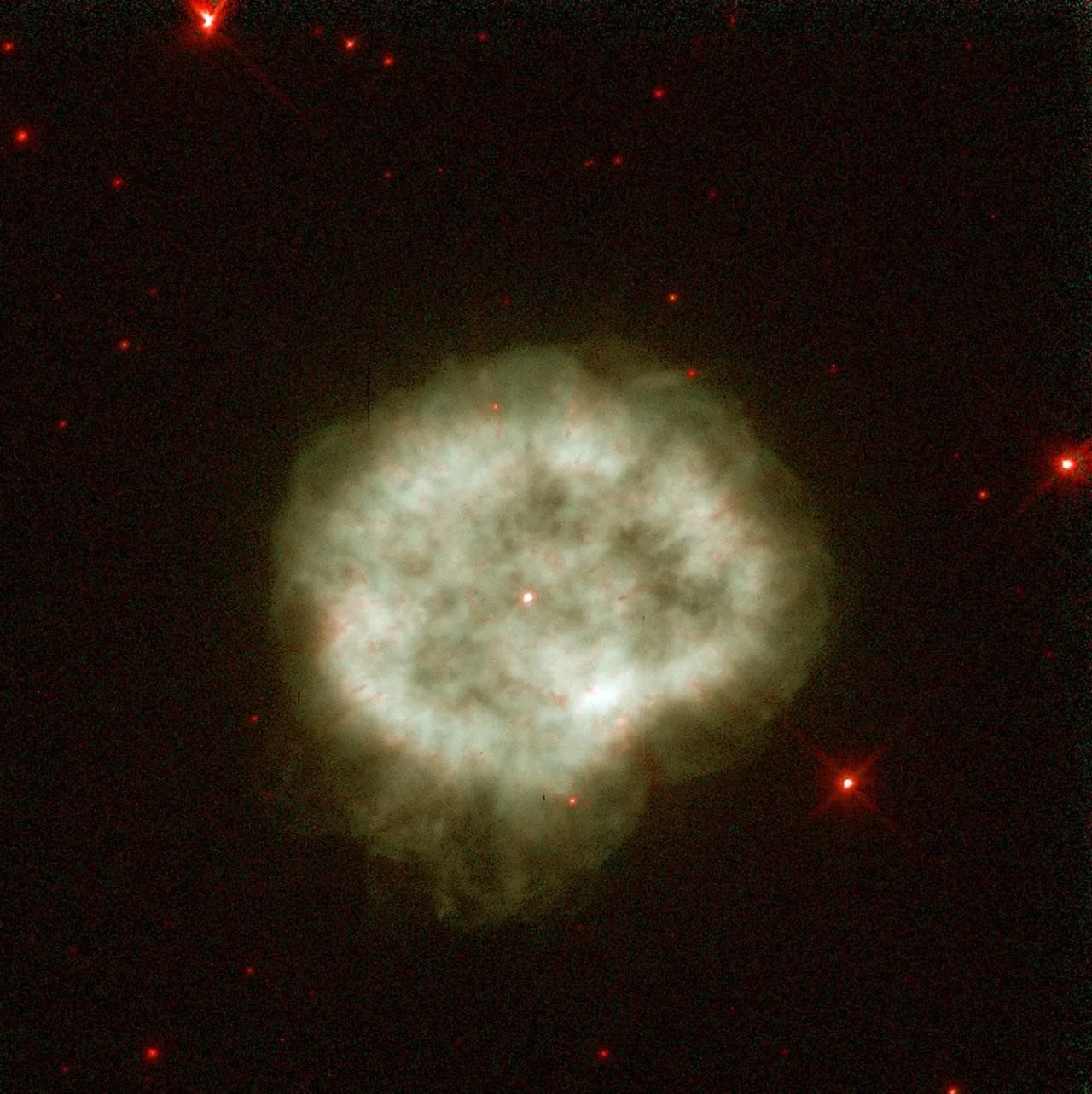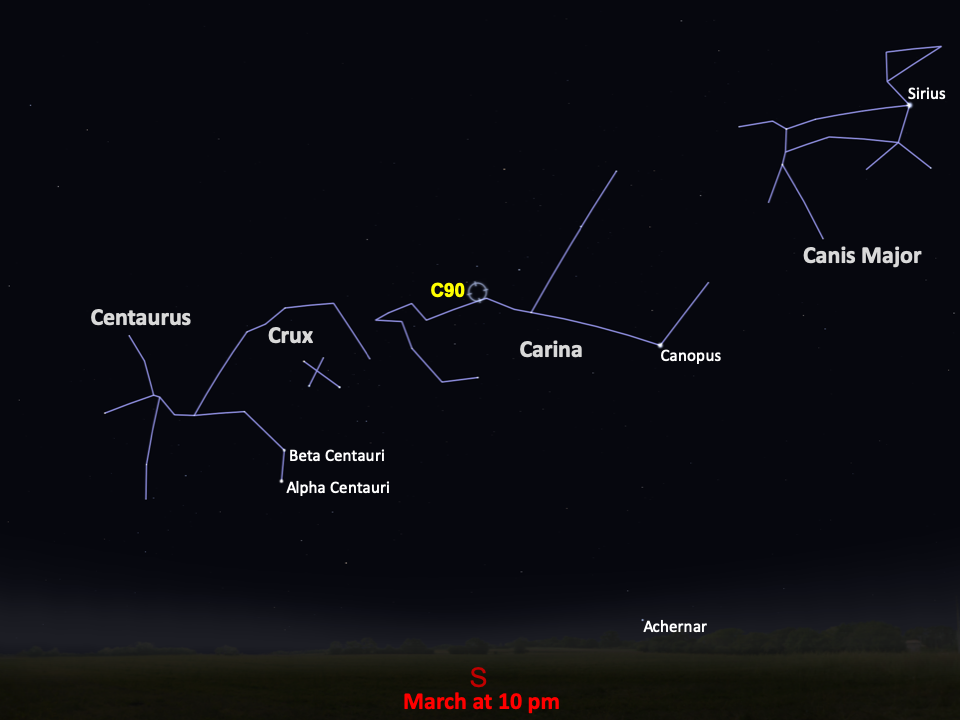Caldwell 90
A dying Sun-like star gave us Caldwell 90.
Distance
6,000 light-years
Apparent Magnitude
9.7
constellation
Carina
object type
Planetary Nebula

Despite its eerie appearance, Caldwell 90 seems to be a fairly typical planetary nebula. It was discovered by John Herschel on April Fool’s Day in 1834 and later cataloged as NGC 2867. Ironically, he originally thought he may have discovered a new planet. More people than John Herschel have been fooled by the appearance of these nebulae, which is why the term “planetary nebula” was coined in the first place — they often look like planets when viewed with small telescopes.
Caldwell 90 was formed in the late stages of the evolution of a Sun-like star. After having steadily produced energy for several billion years through the nuclear fusion of hydrogen into helium in its core, the star underwent a series of energy crises when its supply of hydrogen began to run low. Without the outward force previously created by the energy production, gravity took over and caused the star’s core to contract. The extra pressure allowed the star to produce a heavier element — carbon — in its core. The synthesis of carbon generated a lot more energy than the fusion of hydrogen into helium, which helped the star to not only overcome gravity to expand once again but led the star to swell up a hundred-fold to become a red giant.
Eventually the red giant’s outer layers of gas were ejected. Meanwhile, the star transformed from a cool giant into a hot, dense star that radiates ultraviolet light and a fast wind of particles that move outward at around 6 million miles per hour. The stellar wind and ultraviolet light interact with the layers of gas that the red giant ejected to create the glowing, spherical shell we see today.
This Hubble image was taken in visible and infrared light using the Wide Field and Planetary Camera 2 as part of a survey of planetary nebulae. Caldwell 90 is located about 6,000 light-years away toward the southern constellation Carina and is best viewed in the late summer or early autumn from the Southern Hemisphere, though it can be spotted low in the sky during the late winter or early spring from Northern Hemisphere locations near the equator. It’s so tiny that it will look like a star even in fairly large telescopes, so use high magnification to get the best look. The magnitude-9.7 nebula will resemble a tiny turquoise stone embedded in the night sky.
For more information about Hubble’s observations of Caldwell 90, see:
NGC 2867

Glossary
Magnitude - The brightness of an astronomical object, represented by a number; bright objects have low numbers on the magnitude scale, while dim objects have high numbers.
Nebula - An interstellar cloud of dust and gas; either a location where new stars are being forged or a cloud of material ejected into space by a dying star.
Planetary Nebula - An expanding shell of gas around an aging or dying Sun-like star, cast off by the star.
Red Giant - The late evolutionary stage of an intermediate-mass star that has exhausted the nuclear fuel in its core and now fuses hydrogen in an expanding shell around the core.
Explore Hubble's Caldwell Catalog
The following pages contain some of Hubble’s best images of Caldwell objects.

Caldwell 1
Also known as NGC 188, this group of stars formed from a large cloud of gas making the stars roughly…

Caldwell 2
This shell of gas is expanding outward, away from the dying star within.

Caldwell 3
This barred spiral galaxy was first spotted by British astronomer William Herschel in April 1793 in the constellation Draco.




